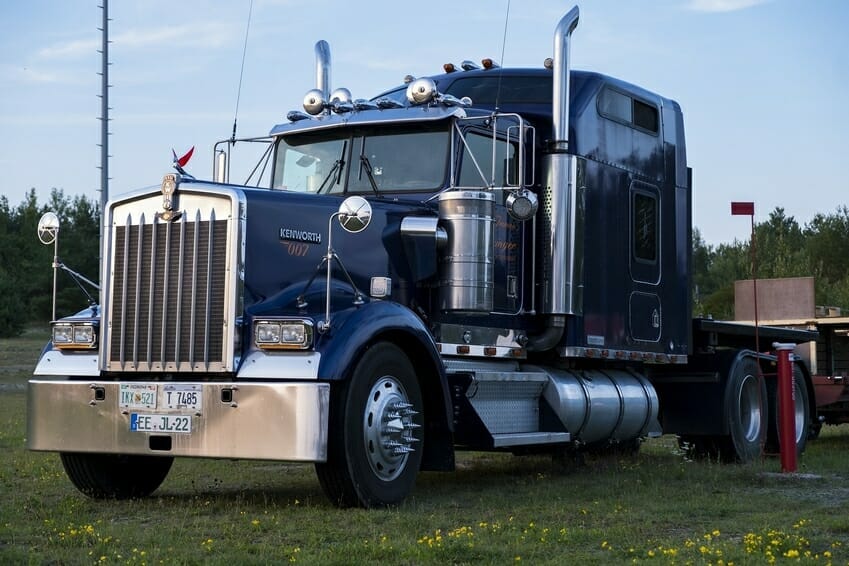There is no doubt that driving near an 18-wheeler can be intimidating. Fully loaded tractor-trailers can weigh as much as 80,000 pounds. When a behemoth of that size collides with a passenger car, it usually doesn’t end well. Truck drivers are taught to keep their eyes out for other vehicles by constantly surveying surrounding lanes, but inexperience, road conditions, fatigue, and other factors can affect their driving.
Drivers of cars and other small vehicles must steer clear of the danger zones around large trucks. But what are these danger zones, and how can you avoid them? We provide the answer in this article.
If you or a loved one is in a truck accident, contact our legal team at Terry Bryant Accident & Injury Law. We will help you examine your case facts, determine who is liable, and commence the claims process. Call us now at (713) 973-8888 or toll-free 1 (800) 444-5000 for your free and confidential case review.
Why retain the services of our truck accident lawyers?
Truck accident claims not only have devastating consequences but are also pretty complex. You need an experienced legal team to handle your case. You get this when you retain the services of our truck accident lawyers at Terry Bryant Accident & Injury Law.
We will help you receive economic and non-economic damages and ensure the compensation covers all your losses.
We have over a century of combined experience and can help you handle all the complexities of your truck accident case. We will prioritize your case and dedicate the time and resources needed to secure a favorable outcome. We are committed to all our clients and will always put your interests first. Do not hesitate to contact us if you need a legal team to fight for you.
Danger zones you should know about
When driving near large commercial trucks like 18-wheelers, pay attention to danger zones to minimize the risk of an accident. The following are some of the danger zones around trucks you should know about:
Blind spots
Trucks have large blind spots known as “no-zones.” Blind spots are areas around a truck where the driver’s visibility is limited or non-existent:
- Directly at the back of the truck
- Alongside the truck, particularly on the right side, extending from the side mirrors to the back of the trailer
- In front of the truck, mainly if it follows another vehicle too closely.
There is also a blind spot over the driver’s left shoulder. When driving near a truck, stay ahead of or behind it to remain out of blind spots and stay visible to the truck’s driver. Assume that if you can’t see the driver in the truck’s side mirror, the driver can’t see you.
Wide turns
Trucks require more space to turn than passenger vehicles because of their length and size. For instance, when a truck makes a right turn, it swings to the left to accommodate the turn. This creates a danger zone for vehicles on the truck’s right side, especially if they try to pass on the right when the truck turns.
Therefore, never pass between the truck and the curb when the truck’s right turn blinker is on, even if the truck is in a middle lane. Vehicles that try to pass a turning truck may end up crushed by it. So, always pass trucks on the left.
Don’t linger next to the truck while passing. Accelerate out of the blind spot as quickly as possible. Trucks tend to pick up speed when heading downhill, so avoid trying to pass them on downgrades.
Drafting zone and stopping distance
Following a truck too closely is dangerous and is known as drafting or tailgating. The air turbulence created by the truck might affect the handling of smaller vehicles and increase the risk of a crash if the truck driver suddenly applies the brake.
Also, big rigs cannot stop as quickly as passenger cars because of their enormous size and weight. According to the Federal Motor Carrier Safety Administration, a fully loaded truck traveling in good conditions at highway speeds requires almost two football fields to stop.
Therefore, don’t cut it close when moving in front of a large truck or following from behind. When driving in front of a truck, always ensure that the truck’s front bumper and headlights are visible in your rearview mirror before moving over. When following from behind, leave adequate space between you and the truck.
Underride hazards
An underride accident happens when a smaller vehicle slides under the rear or the side of a truck in a collision. The lower clearance of passenger vehicles can result in catastrophic injuries or fatalities. When driving alongside or behind trucks, especially in low-visibility conditions, be extra cautious and give adequate space.
Let the team at Terry Bryant Accident & Injury Law help you!
If you’ve had the unfortunate experience of being in a large truck accident and need legal representation, a qualified Terry Bryant Accident & Injury Law attorney can help you understand your legal options. Over the years, we have helped clients across Texas get fair compensation after being injured.
We work on a contingency fee basis, so you don’t have to worry about upfront fees. Also, we will only get paid if you have a successful recovery. Our initial consultations are free, and during that time, we will answer all your questions and tell you what to expect during the claim process. Contact us today at (713) 973-8888 or toll-free 1 (800) 444-5000 for a free, confidential, and no-obligation consultation.
Attorney Terry Bryant
 Terry Bryant is Board Certified in personal injury trial law, which means his extensive knowledge of the law has been recognized by the Texas Board of Legal Specialization, setting him apart from many other injury attorneys. The 22 years he spent as a Municipal Judge, Spring Valley Village, TX also provides him keen insight into the Texas court system. That experience also helps shape his perspective on personal injury cases and how they might resolve. This unique insight benefits his clients. [ Attorney Bio ]
Terry Bryant is Board Certified in personal injury trial law, which means his extensive knowledge of the law has been recognized by the Texas Board of Legal Specialization, setting him apart from many other injury attorneys. The 22 years he spent as a Municipal Judge, Spring Valley Village, TX also provides him keen insight into the Texas court system. That experience also helps shape his perspective on personal injury cases and how they might resolve. This unique insight benefits his clients. [ Attorney Bio ]


 Terry Bryant is Board Certified in personal injury trial law, which means his extensive knowledge of the law has been recognized by the Texas Board of Legal Specialization, setting him apart from many other injury attorneys. The 22 years he spent as a Municipal Judge, Spring Valley Village, TX also provides him keen insight into the Texas court system. That experience also helps shape his perspective on personal injury cases and how they might resolve. This unique insight benefits his clients. [
Terry Bryant is Board Certified in personal injury trial law, which means his extensive knowledge of the law has been recognized by the Texas Board of Legal Specialization, setting him apart from many other injury attorneys. The 22 years he spent as a Municipal Judge, Spring Valley Village, TX also provides him keen insight into the Texas court system. That experience also helps shape his perspective on personal injury cases and how they might resolve. This unique insight benefits his clients. [ 

